 |
 |
|
 |
|
 |
| |
|
 |
Photo
Gallery |
|
|
 |
|
|
 Maharashtra
Tour Maharashtra
Tour |
|
Religious
Places in Maharashtra
|
| |
|
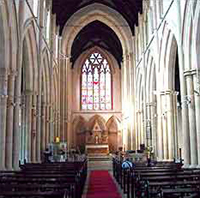 Afghan
Memorial Church Afghan
Memorial Church
The Afghan Memorial Church of St. John the Baptist, also
known as St John's Church is located at Colaba, Mumbai.
It was established in 1847 AD and consecrated 11 years
later as a memorial to those who fell in the First Afghan
War of 1843 and Sind campaign of 1838.
The
roof of the Afghan Memorial Church
is built of varnished teakwood
with hammer beam style ribbing,
while the flooring is done with
chancel made of encaustic tiles
in-laid with coloured clay imported
from England.
The
Church has a beautiful altar,
tall pinnacles, 21 lancet windows
with exquisite stained glass
fixed in the triangular apexes,
on either side of the nave. The
remaining portions of the nave
windows were fitted earlier with
Venetians instead of glass, but
it has changed with coloured
glass windows.
There
are 30 lancet windows glazed
with coloured quarries in the
clerestory. At the west end of
each aisle are triplet windows,
one in the south aisle behind
the organ is filled with plain
glass but the one in the north
aisle behind the side altar is
a memorial window.
Mumbai
is well connected by air, rail
and road with all the important
places within and beyond the
state. To reach the church Taxis,
city buses and local trains are
available. Mumbai offers tourist
a wide range of accommodations.
|
|
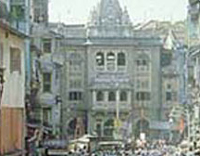 Amba
Devi Temple Amba
Devi Temple
Ambadevi Temple is situated at the heart of the city
of Amaravati, Maharashtra, which is 155 km from Nagpur.
The presiding deity is Amba Devi (Goddess of Shakti).
According to legends, it is believed that Shri Krishna
married Rukmini after abducting her when she came to
pray at the Amba Devi temple. The Goddess Amba is popular
amongst the devotees from Vidarbha.
The
nearest airport and railway station
are situated at Nagpur. Amaravati
is connected by road as well;
tourists can also take buses
from Nagpur or hire taxis. Accommodation
is available at Dharamshalas
and in the rooms let by locals.
|
|
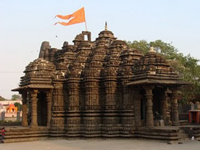 Ambarnath
Temple Ambarnath
Temple
Ambarnath Temple is on the Mumbai-Pune railway line at
Akoli. Ambarnath Temple is said to be the only temple
of its kind in India. The temple, which dates back to
1060 AD compared in the fascinating and delicate complication
of design to the famous Dilawara Temples of Mount Abu.
One can hardly or rarely come across a temple, which
can compare even remotely with the Ambarnath temple.
It is believed that King Mahamandaleshwar built the temple
in the memory of his predecessor.
Fairs
are held once a year during Shivartri,
and thousands of pilgrims flock
to the temple on this event.
Nearest airport from here is
Mumbai. There is a railway station
at Ambarnath. State transport
plies buses regularly to Ambarnath
from almost all important places
in Maharashtra. The ancient Shivalaya
of Ambarnath is also worth visitin
|
|
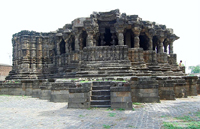 Anwa
Temple Anwa
Temple
Anwa Temple is located 10 km away from Golegaon near
Aurangabad, Maharashtra. Presiding deity is Lord Shiva,
and the temple dates back to 12th century. The temple
has a sanctuary and a mandap (open hall) with decorated
pillars. Anwa is a small village on the main road leading
from Aurangabad to the Ajanta Caves.
Anwa
village gained importance because
of Anwa Temple. The pillars of
the temple has beautifully carved
sculptures and decorated pillars.
The temple has also images of
Vishnu, Ganesha and other divinities.
As
Anwa is very close to Ajanta,
it is very convenient to travel
by road from Golegaon. Private
car or taxi is the best mode
of transport. For accommodation
small budgeted hotels are available
at Ajanta. One can also stay
at the government guesthouse.
|
|
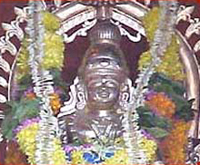 Ayyappa
Temple Ayyappa
Temple
Mumbai's Ayappa Temple is regarded to be the only Ayappa
Temple outside Kerala state. The original name of this
temple is Mini Sabarimala Shree Ayyappa Temple. It is
situated atop a hillock surrounded by hills and valleys
within the area of NCH Colony. A tiny stream originating
from the vicinity adds the sanctity and beauty of the
temple environment.
Ayappa
Temple is a unique temple resembling
the Holy Shrine of Shree Dharma
Shastha (Ayyappa) at Sabarimala,
Kerala, crowning the Western
Ghats. This temple attracts thousands
of devotees throughout the year.
The
major festival is 'Mandala Makara
Vilakku' festival (mid November
to mid January), which starts
with the Mudhradhanam for the
devotees who undertake pilgrimage
to Sabarimala. Festivals apart
from the usual Hindu festivals
which are celebrated here are
'Pankuni Uttiram'- the birthday
of Shree Ayyappa, 'Prathista
Dinam', 'Vishu' (New Year)- April
14th, Onam, Ganesh Chaturthi,
Vijaya Dashami, and Deepawali.
|
|
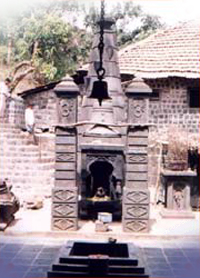 Bahubali
Hill Temple Bahubali
Hill Temple
Bahubali Hill Temples are located 27 km south of Kolhapur,
Maharashtra on the Bahubali Hills. Huge devotees thronged
the temple to worship the 28-feet tall marble statue
of Bahubali and visit the temples of the 24 Tirthankaras
or saints. These hills are popularly known as 'Kumbhojgiri'.
A Celibacy Resort was established in 1935 and named after
the sage Bahubali who mediated here about 300 years before.
This
temple looks very beautiful and
splendid. The scene of the forest
and the village farms looks full
of delight and beauty. People
visiting these temples have to
climb about 400 steps. A fair
is held here on the 15th day
of the bright half of the month
of Kartak, on the 15th day of
the bright half of the month
Chaitra and on the 10th of day
the dark half of the month of
Magasar
Visitors
can take a train from the nearest
railway station at Hathkalangad,
about 8 km away, on Kolhapur
- Miraj railway line. This temple
is at a distance of 31 km from
Kolhapur. There are steps for
climbing the hill. Bus service
and private vehicles are available.
They go to the foot of the hill.
The Swetambar Jain Trust provides
accommodation for the devotees.
|
|
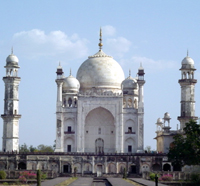 Bibi
Ka Maqbara Bibi
Ka Maqbara
Bibi Ka Maqbara is situated 5 km away from Aurangabad.
Aurangazeb's son, Prince Azam Shah built it in 1678 in
the memory of his mother Begum Rabia Durani. This mausoleum
is a replica of the famous Taj Mahal.
Despite
the layout and surrounding of
the tomb is very much similar
to Taj Mahal, somehow the architecture
fails to produce the magic of
the Taj. Hence, it is considered
to be a poor imitation of the
Taj Mahal.
The
chief architect of the monument
is a Persian called Ustad - Ata
- Ullah. The inscription on the
walls of the tomb reveals that
it cost precisely Rs. 665,283
and 7 Annas to build this monument.
Bibi
Ka Maqbara has four towering
minarets like Taj Mahal. An octagonal
lattice-screen of white marble
surrounds the raised plinth supporting
Rabia Daurani's grave inside
the tomb. The tips of its pillars
are made of red stone. The monument
becomes so beauty when its reflection
falls on the water as soon as
the sun's first rays fall on
it.
MTDC
organizes a fair every October
as the Bibi Ka Maqbara festival.
Aurangabad is well connected
through air, train and road.
Accommodation facilities are
available at various hotels at
Aurangabad.
|
|
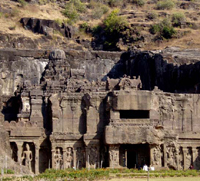 Kailash
Temple Kailash
Temple
It is believed that the construction of the Kailash Temple
was started in the mid 8th century under the direction
of King Krishna I (757-775) of the Rashtrakuta dynasty.
This temple is world's largest monolithic structure carved
from one piece of rock and the most extensive rock-cut
projects ever undertaken.
Kailash
Temple is situated near the village
of Ellora, 30 km from Aurangabad.
The temple is considered as one
of the most astonishing buildings
in the history of architecture.
This is one of the largest 34
excavations at Ellora, which
took almost a century. Kailash
Temple is dedicated to Lord Shiva.
The idol measures 109 feet wide
by 164 feet long.
Kailash
Temple has number of images of
deities, animals, and other mythical
creatures from the puranas in
a manner that leaves one in rapturous
delight. Entire panels were carved
showing scenes from the Mahabharata
and the Ramayana.
Every
December, MTDC organises the
Ellora festival of music and
dance at the Kailash Temple.
Ellora is well connected by all
means of transport. Accommodation
is available at the hotels in
Aurangabad.
|
|
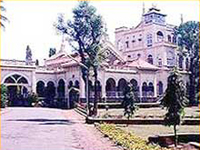 Osho
Ashram Osho
Ashram
Osho Ashram, also known as the Osho Communal Centre is
located at the greenery area of 17 Koregoan Park of Pune,
Maharashtra. The Ashram offers a variety of expensive
courses on meditation.
Osho
Ashram attracts a number of devotees
each year including a large number
of them from the western countries
since early 70s even though Osho
expired in 1990.
Facilities
of swimming, sauna, tennis, massages,
beauty parlour, basketball courts
and Bistros are available at
the Ashram. There is a rock garden
of 5 hectares called Osho Park
in the side of the Ashram. The
nearby Nulla Park, also known
as Osho Teerth is a beautifully
maintained garden, transformed
from a swamp. The garden opens
for public from 6 to 9 in the
morning and 7 to 10 in the evening.
Nearest
airport and railhead is at Pune.
The city is well connected by
road with all the places in Maharashtra
and other parts of the country.
Accommodation is available at
the hotels in Pune.
|
|
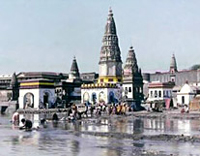 Pandharpur Pandharpur
Pandharpur is located in a place, which is 65 km away
from Sholapur on the banks of river Bhimarathi. This
place is one of the most revered pilgrimage sites in
Maharashtra.
Pandharpur
preserves Lord Vithoba's image
in a grand temple. Vithoba is
a form of Krishna. The name Vithoba
means Father Vitthala. Vitthala
is said to have been derived
from the word Vishnu in Kannada.
The
worship of Vishnu - Vitthala
at Pandharpur is derived mainly
from the puranas and has been
augmented by the contribution
of the great Vaishnava saints
of Maharashtra from the 13th
to 17th centuries (Namdev, Jnaneshwar,
Eknath, Tukaram).
The
temple with its vast area has
a total of six gates. The eastern
entrance to this temple is known
as the Namdev gate. The sanctum
enshrines a standing image of
Vithoba also known as Panduranga,
Pandhari or Vitthala.
The
image dates back to the 5th century.
There are inscriptions in this
temple dating back to the 13th
century. Namdev, the 13th century
saint was closely associated
with this temple. Copper plate
inscriptions of the Rashtrakootas
place this shrine in the 6th
century. There is also a shrine
to Pundalik at Pandharpur.
|
|
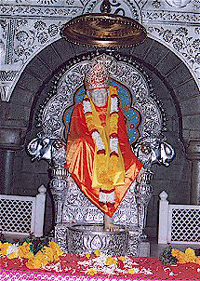 Shirdi Shirdi
Shirdi, a small village in Kopargam Taluk, in Ahmadnagar,
Maharastra is regarded to be an important pilgrimage
place in India as sage Sai Baba lived here till his death.
It is about 285 km, which is 6 hours drive from Mumbai.
After
his death, Sai Baba's fame has
spread far and wide. Sai Baba
believed and respected all religions.
Samadhi Temple was started during
the lifetime of Sai Baba, with
a view to having a temple of
Sri Krishna. But later, Sai Baba
himself decided to live there.
So, after Sai Baba attained Nirvana
(eternal peace), His mortal remains
were buried at the place. The
articles and valuables, which
were used by the Baba, are exhibited
in a room here.
Dwarkamayee
Masjid is the place where Baba
lived for almost for 60 years.
There is also a place called
Chavadi where Sai Baba used to
visit every alternate night.
Gurusthan is the place where
Sai Baba used to sit under a
neem (Margo) tree. It is said
that the leaves of this tree
lost their bitterness with to
the grace of Sai Baba. Samadhis
of Baba's devotees like Abdul
Baba, Nanavalli, Bhau Maharaj
and Tatya are also there in Shirdi.
There are also interesting and
holy places related to Sai Baba.
Nearest
important railway station is
at Kopergaon, trains of major
cities are available. The Shirdi
Sai Sansthan provides boarding
and lodging facilities but since
large numbers of devotees throng
the place, especially on Thursdays,
one can find it difficult to
get accommodation. But there
are good hotels, which cater
to the needs of all classes of
devotees. Locals also let rooms
on rent over here.
|
|
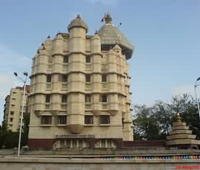 Siddhivinayak
Temple Siddhivinayak
Temple
Siddhivinayak Temple is in Mumbai, Maharashtra. Siddhivinayak
Lord Ganapati/Ganesh is worshipped in the temple. The
temple dates back to 18th Century. Vinayak is considered
to be one of the Ashta Vinayak shrines of Maharashtra,
celebrating eight instances of legends related to Ganesha.
The
present form of the temple was
re-constructed five years ago.
The temple has a Kalash, which
is a pointed dome of 12 feet
high Gabhara (sanctum sanctorum)
weighing 1500 kg and plated in
gold. So, it facilitates the
'Darshan' of Sri Siddhivinayak
from either the area surrounding
the Gabhara or the stage (Sabha
Mandap) constructed to conduct
pujas and festivities.
The
idol of Ganapati is also called
Chaturbhuj as it has four arms.
A lotus is held in the upper
right hand symbolises auspicious
piety and a small axe in the
upper left, a holy rosary of
beads (Japmala) are held in the
lower right and a bowl full of
Modaks (a delicacy which is a
perennial favorite with Sri Siddhivinayak)
in the lower left. On auspicious
Tuesdays, the serpentine queue
of worshippers is over 2 km long.
Mumbai
is well connected by air, rail
and road with all the places
in the state as well as the country.
Tourists can take the city buses
from any point of the city and
reach this temple.
|
|
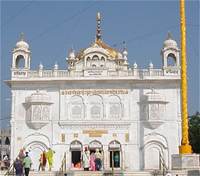 Takht
Sri Hazur Sahib Takht
Sri Hazur Sahib
Takhat Sachkhand Shri Hazur Abchalnagar Sahib is the
most important Gurdwara situated in Nanded, Maharashtra.
It is one of the four high seats of Authority of the
Sikhs. Guru Gobind Singh, the 10th Sikh Guru died in
Nanded and his ashes are buried in the Sach Khand Shri
Huzur Gurdwara on the side of the river Godavari.
Different
kinds of weapons of Govind Singhji's
time are exhibited here. The
Guru gave his last sermon to
the Sikhs in this Gurudwara.
The Gurdwara is beautifully architected
with marble and golden plating.
Corners of the roof of the first
floor are decorated with domed
kiosks on octagonal pedestals.
The
sanctum has marble lining decoration
with inset work in floral patterns
on lower parts of the walls and
stucco and tukari work on the
upper parts as well as on the
ceiling.
Nearest
and convenient airport is Aurangabad.
There is a railway station at
Nanded. It is well connected
by road with the important places
within and beyond the state.
Accommodation is available at
the hotels in Nanded. Free lodging
is provided at the Dharamshala,
which is just beside the Gurudwara.
|
|
Jyotirlingas
Tour
The
five Jyotirlingas of Maharashtra
are Aundha Nagnath, Bhimashankar,
Ghrishneshwar, Parali Vajinath,
and Trimbakeshwar.
Surrounded
by thick dense forest, Bhimashankar
is a major pilgrim place. About
25,000 pilgrims visit here to
take part in the annual Maha
Shivratri fair. Bhimashankar
got its name due to the origin
of River Bhima here.
Trimbakeshwar
is a very holy place of Maharashtra.
It is situated near Nasik.
It
is believed that Aundha Nagnath
is constructed by the eldest
Pandav while they were in exile
for 14 years. The Aundha Nagnath
has great significance as it
is considered to be the 8th of
the 12 Jyotirlingas.
Grishneshwar
temple is located at a distance
of 11km from Daulatabad near
Aurangabad.
|
Aundha
Nagnath
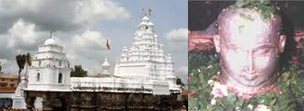 Aundha
Nagnath is one among
the 12 Jyotirlingas of
India. Among the 12 Jyotirlingas,
5 lie in Maharashtra.
Aundha Nagnath is considered
to be the first Jyotirlinga
where Shiva is worshipped.
It is believed that the
Aundha Nagnath was built
by Yudhisthira, the eldest
Pandav, while they were
send in an exile for
14 years. Aundha
Nagnath is one among
the 12 Jyotirlingas of
India. Among the 12 Jyotirlingas,
5 lie in Maharashtra.
Aundha Nagnath is considered
to be the first Jyotirlinga
where Shiva is worshipped.
It is believed that the
Aundha Nagnath was built
by Yudhisthira, the eldest
Pandav, while they were
send in an exile for
14 years.
The
Aundha Nagnath has Hemadpanthi
style of architecture
spreading for over 60,000
sq ft area. The most
unique part of this temple
is that the idol of Nandi
is not present in front
of the shrine of Mahadeva.
A separate Nandikeshwara
temple is built beside
the main temple. The
main temple is surrounded
by small temples of 12
Jyotirlingas on all four
sides. In all total there
are 108 Shiva temple
and 68 shrines of Shiva
are to be found here.
Besides, there are idols
and temples of VedavyasaLinga,
bhandareshwar, Nilakanteshwar,
Ganapati, Dattatreya,
Muralimanohar, Dasavatar.
Another
fascinating part of the
Aundha Nagnath temple
is that snakes flanking
the Shiva linga with
their hoods are often
seen here. The temple
has an exquisite architectural
beauty. It has large
corridors and a 8 pillared
court hall. The Shiva
Linga is located in Garbhagriha.
Getting
There:
Nearest rail head is at Chondi, 21 km from Aundha
Nagnath. By road Aundha Nagnath is 579 km from
Mumbai, 359 km from Nagpur, 210 km from Aurangabad.
State transport buses are frequently available.
|
|
|
Bhimashankar

Bhimashankar
Jyotirlinga is situated
in the north of Pune,
on the Sahayadri, by
the banks of the river
Bhima. It is from here
that the Bhima River
flows. It is believed
that Lord Shiva was pleased
by the devotion of a
king named Bhimak of
the sun Dynasty and is
called the Jyotirlinga
in the place. But according
to the Shiv Purana the
Bhimashankar Jyotirlinga
is situated on the Mountain
Brahmapur, district Kamrup
of Assam. Lord Shiva
had incarnated so that
he could destroy the
demons and protect his
devotees and for the
welfare of one and all.
It is believed that once upon a time in the place
called Kamrup a great devotee by the name of
King Kamrupeshwar would reside. He would be constantly
abandoned in the worship of Shiva. During the
same a demon named Bhima emerged and started
harassing the people. He had heard many a things
about the sublime devotion of Kamrupeshwar. He
wanted to kill King Kamrupeshwar. No sooner he
attacked the king absorbed in worship, his sword
fell on the linga instead of the king. Instantly
Lord Ashutosh appeared and destroyed Bhima along
with his army.
Seeing this, all were elated. On the sincere
request of the gods and sages he agreed to reside
there eternally by the name of Bhimashan
Bhimashankar, one of the twelve Jyotirlingas
Temples , can certainly be termed as a Pilgrim
Paradise. The dense forests surrounding the high
ranges also play an abode to the rare species
of flora and fauna. Situated at the extreme end
of the Sahayadri Ranges, this place gives a wonderful
view of the world around you, the forts, the
rivers and the hill stations around.
|
|
|
Ghrishneshwar
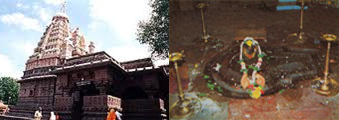 Grishneshwar
Temple is an ancient
pilgrimage site revered
as the abode of one of
the 12 Jyotirlinga manifestation
of Lord Shiva. The Grishneshwar
Jyotirlinga shrine is
located at a village
called Verul, which lies
20 km from Daulatabad
(near Aurangabad in Maharashtra)
and approximately 100
kms from Manmad station.
Located close to Daulatabad
(once known as Devagiri)
is the popular tourist
attractions Ajanta -
Ellora. Grishneshwar
Temple is an ancient
pilgrimage site revered
as the abode of one of
the 12 Jyotirlinga manifestation
of Lord Shiva. The Grishneshwar
Jyotirlinga shrine is
located at a village
called Verul, which lies
20 km from Daulatabad
(near Aurangabad in Maharashtra)
and approximately 100
kms from Manmad station.
Located close to Daulatabad
(once known as Devagiri)
is the popular tourist
attractions Ajanta -
Ellora.
The
Grishneswar Temple was
constructed by Ahilyabhai
Holkar who also re-constructed
the Kashi Viswanatha
Temple at Varanasi and
the Vishnu Paada Temple
at Gaya. The Grishneshwar
Temple is also known
by several other names
like Kusumeswarar, Ghushmeswara,
Grushmeswara and Grishneswara
|
|
|
Parali
Vajinath
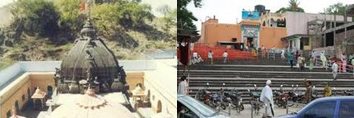 Parli
Vaijnath is situated
in Beed District. Swayambhu & Jagrit
Sthan of Lord Sri Vaijnath,
one of the twelve places
of Jyotirling in India.
Sri Ahilyabai Holker
renovated this temple. Parli
Vaijnath is situated
in Beed District. Swayambhu & Jagrit
Sthan of Lord Sri Vaijnath,
one of the twelve places
of Jyotirling in India.
Sri Ahilyabai Holker
renovated this temple.
An imposing & majestic temple on a hill.
As one enters the premises of the temple spacious
stone steps and lofty Mahadwar attracts one's
attention.
Here Sabhamandap & Garbhagriha are at the
same level, which is rarely found in any Shiv
mandir. Famous business centre. Thermal power
station.
|
|
|
|
Trimbakeshwar
Jyotirlinga
|
Jyotirlinga
are set of 12 Shiva Temples spread
all over India and considered
holiest for Shiva devotees. Trimbakeshwar
near Nashik, Bhimashankar, Off
Pune and Grishneshwar near Ellora
caves are three temples in Maharashtra.
To add to this there is also
Nagnath at Aundha and Parli Baidyanath
that are considered by many one
of the Jyotirlingas.
|
|
Shaktipeethas
of Maharashtra
The
four Shaktipeethas of Maharashtra
are well described in Devi Bhagavata
Purana. Himavanta (Lord of Himalayan
mountains), worshiped Jaganmata
for a long time to get her as
his daughter. Pleased by his
devotion, she appeared before
him and gave the boon. Himavanta
was very happy. But, he was clever.
He asked her another boon to
give Bhakti and Jnana so that
he can take care of her properly.
Jaganmata told him that one who
wishes Bhakti-Jnanas from her
is a real devotee and she will
be more interested to bless them
than any other. She told Devi
Geeta to Himavanta.
In
the Devi Geeta she mentioned
few important places on the earth
which she likes a lot. Out of
them the top most priority goes
to the four Shakti peethas present
in Maharashtra. They are:
- Hingula
(Tulja devi) in Tulaja
puram (Tuljapur)
- Lakshmi
(Amba bai / Maha laksmi)
in Kolhapuram (Kolhapur)
- Renuka
in Matru pattanam (Mahur)
- Jwalamukhi
(Sapta shringi mata) in
Saptashringam (Saptashringi)
|
|
|
Tulja
bhavani in Tuljapur
|
Maha
laxmi in Kolhapur
|
|
|
|
|
|
Renuka
mata in Mahur
|
Saptashringi
mata in Saptashringi
|
Significance
of four Shakti peethas:
What
does four Shakti peethas resemble?
We can't tell why Jaganmata categorized
these four shaktipeethas into
a group. But many devotees gave
explanations for this number
four. The number four resembles
the four parts of holy AUM. A
kara, U kara, Ma kara and Mmm
kara (Ardha matra). That is why
they are also called as "Three
and half Shakti peethas".
| Shakti |
Part
of AUM |
Guna |
Resembling
God |
| Tulja
Bhavani |
A
kara |
Rajas |
Brahma |
| Maha
Lakshmi |
U
kara |
Satwa |
Vishnu |
| Renuka
Mata |
Ma
kara |
Tamas |
Maheshwara |
| Saptashringi
Mata |
Ardha
matra |
Trigunateeta |
Adi
Shakti |
|
According
to Yoga shastras and Tantra shastras,
Shakti is present in our body
in the form of Kundalini. It
is described as a female serpent
which is sleeping in Muladhara
Chakra turning it's body into
three and half (3 1/2) circles.
If it is activated with the help
of Spiritual practices, it raises
and passes to Sahasrara through
Sushumna, a small passage in
Spinal cord. The three and half
folds of Kundalini are compared
with the four forms of Shakti
present in this list of Four
Shakti peethas of Maharashtra.
I
heard another important explanation
from a devotee of Shakti. These
four Shakti peethas are worshiped
in Chandi
Upasana. Navakshara Mantra and Chandi
Yantra are
important for Chandi.
In that worship, we come across Nanda,
Shakambari and Bheema Shaktis.
The physical resemblances for
them are:
- Nanda
: Tulja bhavani : Maya
- Shakambari
: Maha lakshmi : Shakti
- Bheema
: Renuka : Jnana and
- Saptashringi
mata is considered as the
combined power for these
three.
All
these belong to Brahma prakriti,
So Brahma maya, Brahma shakti
Brahma ganana and Brahmi sthiti.
|
|
|
|
|
|
 |
 |
 |
|
|
 |
|
|
 |
|
Main
Menu |
Indian
Tours - State wise |
Indian
Tours - Zone wise |
International
Tours |
|
 |
| |
|
|
|
|
|
|
| |
© OM
Tourism. All rights reserved. |
|
|
|
 |